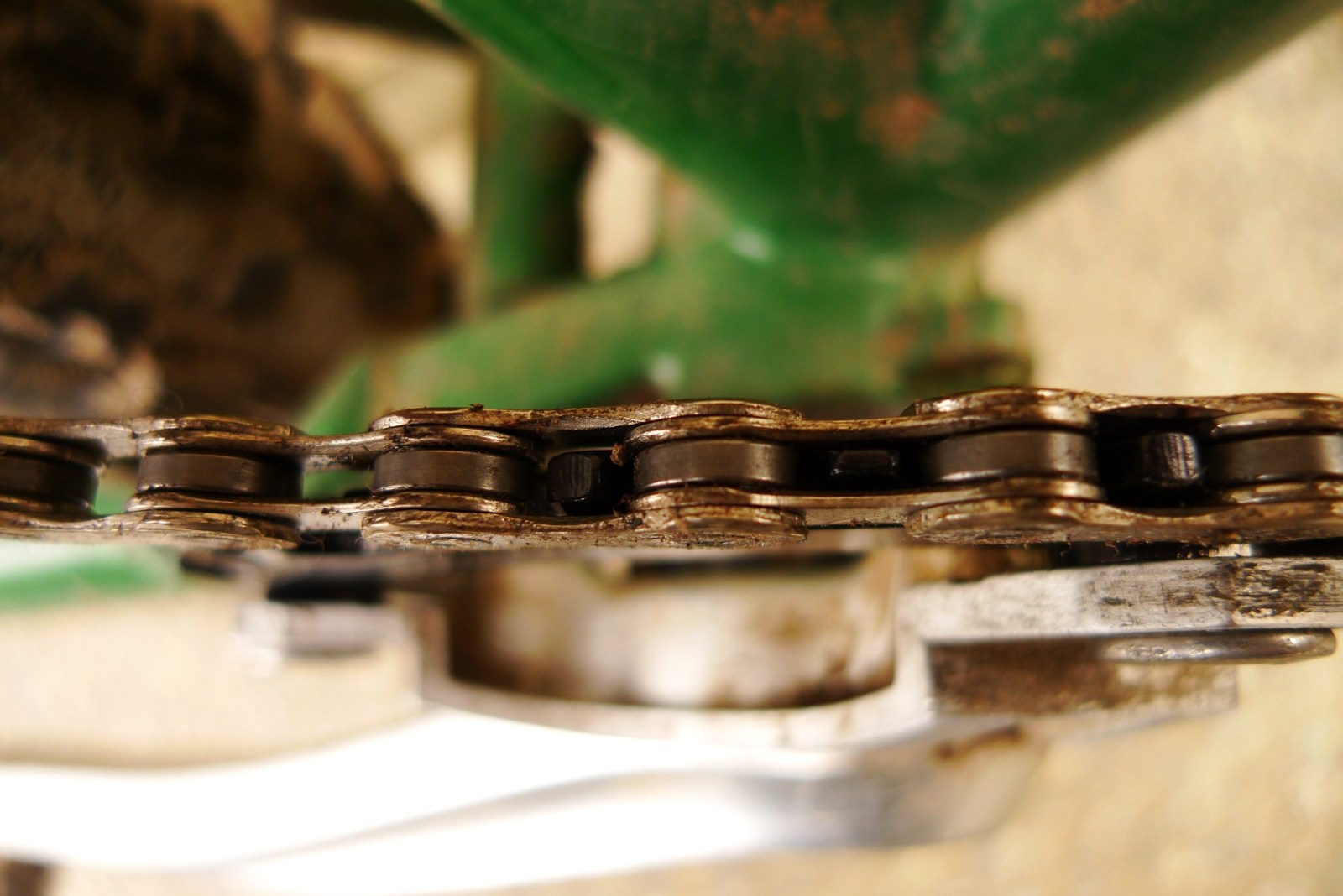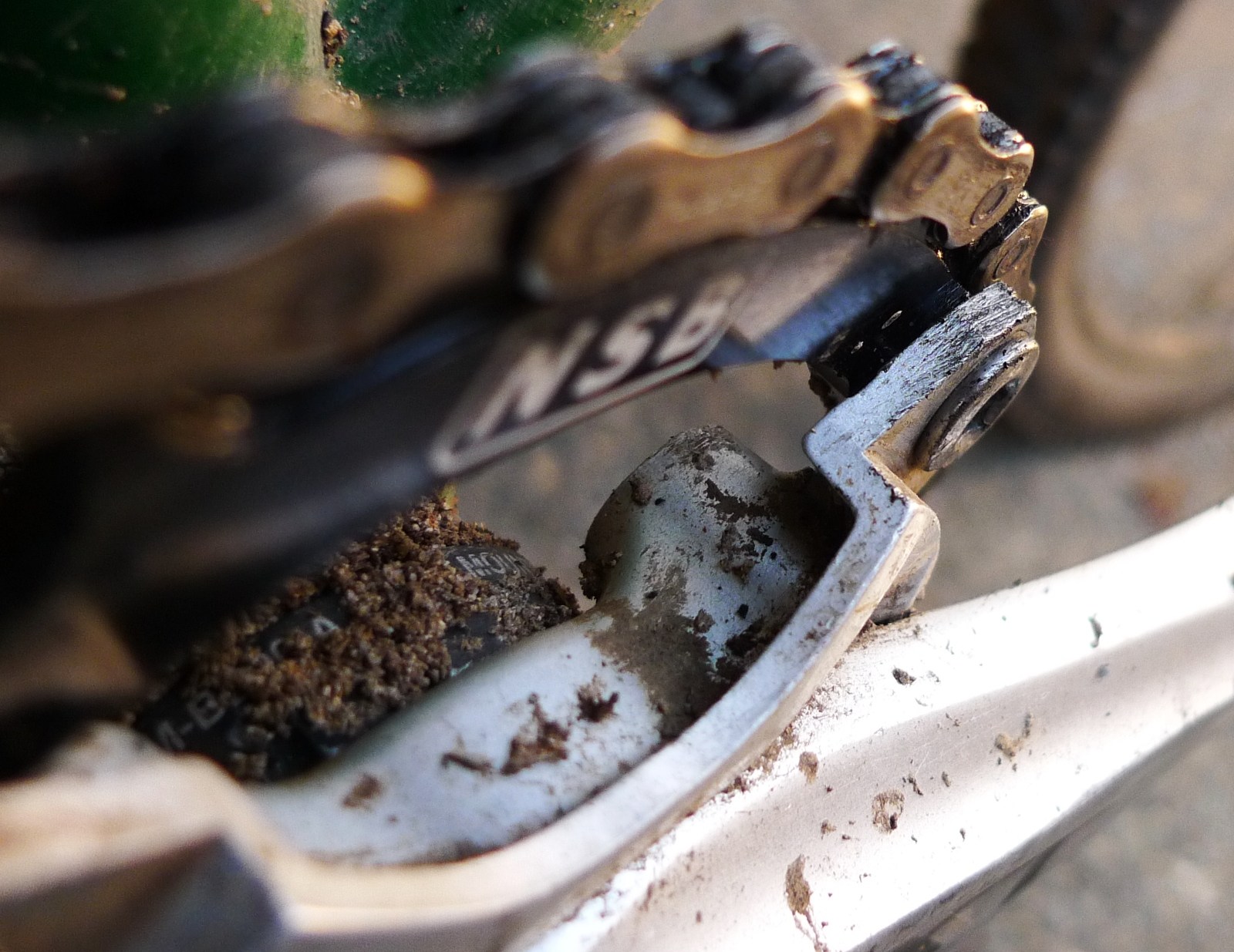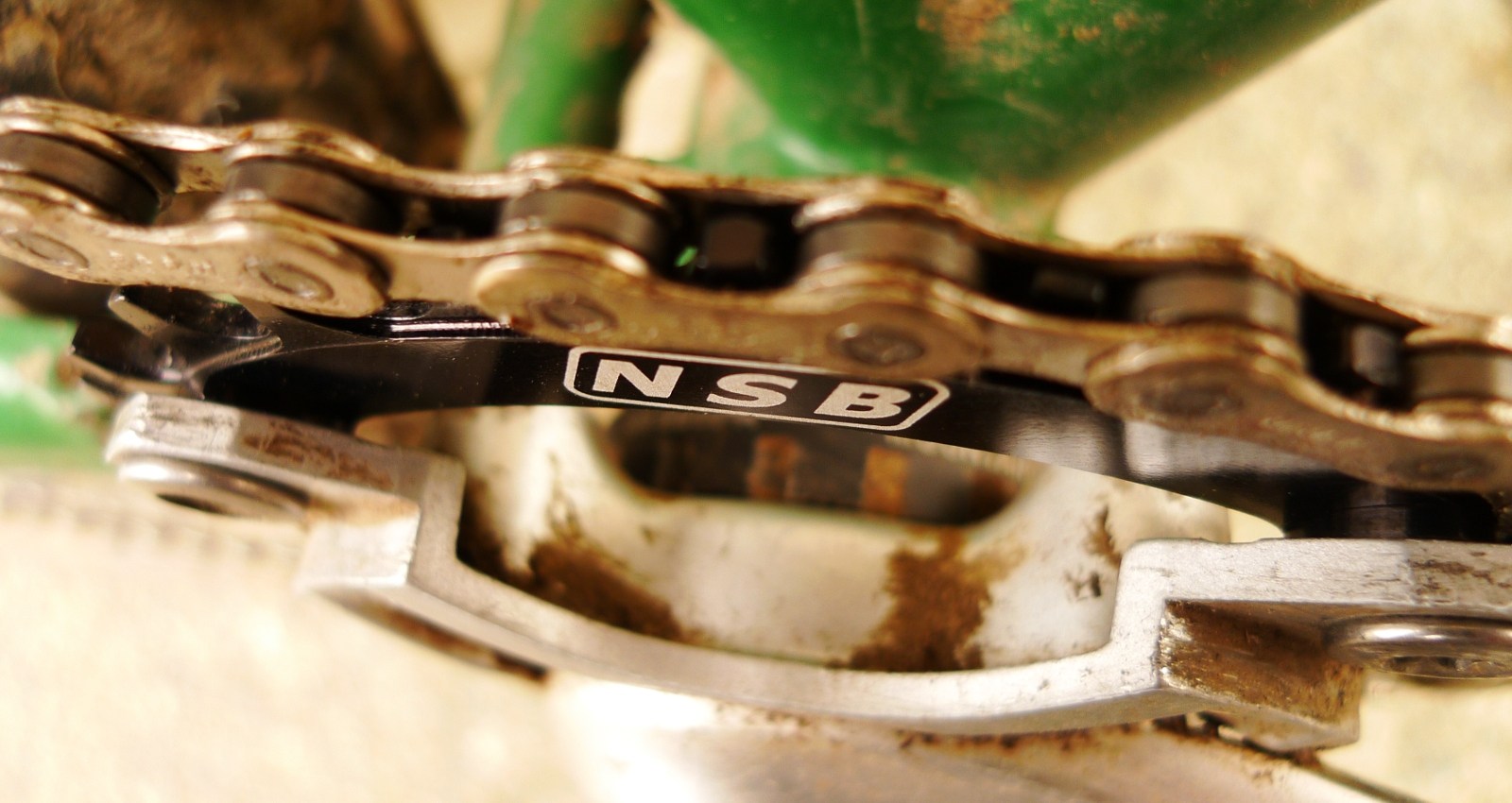
North Shore Billet Variable Tooth Ring
A little history might be in order before I start this review. I have been a 1X aficionado since shortly after I read that Mark Weir climbed one million feet in one year, largely on his 36 tooth, single ring equipped Santa Cruz VPFree. In a thuggish combination of fear and manly bravado, I simply stopped using my granny and stuck to the 36 tooth front ring for the whole summer. That experience led down a road which took me to exclusively riding a single speed for three years. Then a year ago I moved back to gears with a 1×10 speed set up. I am going to stay away from the pros and cons of 1X. This is not the time for that conversation.

NSB’s Variable Tooth design uses a simpler machining process than the other options out there on the market, but still proves effective at keeping the chain where you want it.
Last June, Chris from North Shore Billet handed me a pre-production 32 tooth Variable Tooth chain ring to test. This fancy little bit of design lets you run a single ring out front with out a chain guide, using the tooth profile to hold the chain in place. Not to be confused with Sram’s X-Sync tooth design found on the XX1 and X01 drive trains. While they accomplish the same goal, they are not the same beast.

Being a gear test, I opted to set it up with out any guides, running Shimano XT triple crank arms and a Sram X9 short cage Type II derailleur on my Chromag Surface. As always I left one pair of links worth of slack on the chain, just in case I needed an emergency fix out on a ride.
The first few rides I was skeptical to say the least. It was too simple of a concept to work. I was waiting for my chain to drop at the predictable times, which for me on a hardtail are the straight ahead, fast chunder. While the chain slapping on my chain stay did make a bit of noise, the chain stayed firmly on the ring. After a few rides I quit thinking about it.
I spent the summer in the kitty litter, mud and snow of the South Chilcotin and the autumn cruising around the Sea to Sky trails. During that time I smashed the ring off rocks and roots, and rode for days on end without thoroughly cleaning my drivetrain. It’s worth mentioning I did change my chain once during the summer.

For those completely out of the loop. Variable Tooth rings are machined so the teeth alternate between narrow and wide teeth in order to fill the space between the inner and outer links in the chain, holding the chain more firmly on the ring.
There were a few times while riding on the road that I found the 32 tooth ring a bit spinny, and times grinding up hills in the wet that I could have used a couple more low end gears. But over all I found the 32 to hit the sweet spot for me.
North Shore Billet sells 104BCD Variable Tooth rings in 30 through 38 tooth options for $60 at any store which carries NSB products. If you feel you just cant go with out a granny for some of those sustained climbed, I know at least one person who set up a Variable Tooth ring with a granny and no derailleur.

The 30 tooth ring is specifically machined to allow your chain to sit between the ring and the spider of your crank arms.
I recently swapped to a production 30 tooth ring. On this size, the chainring it self is threaded, and I quickly found out that it takes the standard length bolt used for granny rings, which are slightly longer than those used on the middle and big rings of a triple set up. Something you might want to make sure you have before you start installing. After digging through the bolt bin I found a set of four which were around 10mm in length. They worked on my Shimano XT crank arms without the washers provided by NSB.
Since June I have only dropped my chain twice, both times when my wheels were so caked with mud that the chain got pushed off the ring. Is it worth it? Do you need it? If you want to run a single ring and are looking for a simple way to do so, a Variable Tooth chain ring and a clutch derailleur is about as simple as it gets. The North Shore Billet Variable Tooth ring goes for $60.
However you package it, a variable tooth design is a good thing these days…








Comments
jrcd
10 years, 2 months ago
Apologies in advance if this has been covered elsewhere, but what about the effect of log and rock strikes on the chain and chainring? I like the idea of a 1x drivetrain, but I wonder how the lack of bash ring would decrease the lifespan of these newly naked and somewhat delicate parts?
Reply
megrim
10 years, 3 months ago
These 30t rings are great for going to the 1 x 10. Great gearing for almost every situation. And it feels like the gear ratios get a little closer. The only downside, is that it pushes the chain line 2 mm in. I don't think it's usually a big deal for most bikes, but on my Carbine, it caused quite a bit of chain slap/rub on the lowest pivot. The 30t ring also didn't fit on my buddy's Honzo.
I rode my 30t ring for about 5 months and only had it drop once on a particularly rough section at Whistler.
Reply
Joe Dick
10 years, 3 months ago
Interesting. what chain ring bolts I was using on my single ring set up before did not fit in the 30 tooth. but the bolts I found which I am pretty sure came out of a granny ring worked. when I asked NSB about this I was told the bolt size for the 30 tooth is M8 x 0.75 Standard granny bolts length. 10mm long?.
and correct on the X Sync In briefly talking to the guys at Chromag and NSB who will be making the X Sync rings for Chromag, the tooth profile is quite a bit more refined.
Reply
Nouseforaname
10 years, 3 months ago
@JoeDick - i don't think it is the diameter that is different, 'cos i just used my standard middle ring bolts for the NSB 30t ring. In fact i may well be using singlespeed bolts not even double ring bolts…
@Heckler - Pretty sure that X Sync has a much more refined tooth profile, which 'may' improve retention. Giving how well my cheapy setup is working, i'm not likely to be rushing to X Sync any time soon. And given that King won't be making a XD driver soon i won't be on XX1 either.
Reply
Joe Dick
10 years, 3 months ago
a couple things. first; it is the diameter or width which are smaller on the standard granny ring bolts, not so much the length. I think that got lost when Morgan cleaned up one of my many cluttered paragraphs, and I obviously did not do a great job of explaining it.
Temple, I dont know if you are familiar with type two derailleurs, but they have forward stop on the pulley arm. instead of having it bottomed out, I left a pair of links worth of slack. which might be closer or a proper set up on a single ring set up compared to leaving the same amount of slack on a triple ring with a traditional derailleur.
Reply
TEMPLE
10 years, 3 months ago
As always I left one pair of links worth of slack on the chain, just in case I needed an emergency fix out on a ride.
I don't understand this. Why not run the chain at the right length all the time and carry a Powerlink or similar for emergency fixes? Otherwise, the chain will run for an indefinite amount of time at a suboptimal length before it breaks (if it ever does) before it is finally sized properly.
I haven't found that my bikes handle extra chain length very well (more chain slap, slower shifting, more dropped chains, etc.), but I have never used a 1×10 or 1×11 system. Maybe some drivetrains accept an extra link without a problem?
TEMPLE
Reply
Morgan Taylor
10 years, 3 months ago
heckler, I think the "beauty of a quiet drivetrain" idea is embedded in the recurring idea that "I just forgot about the ring altogether" – but of course that's not explicitly stated.
Reply
Sven Luebke
10 years, 3 months ago
I rode a RF N/W 30T with an old XT derailleur on a hardtail for a while. Occassionally dropped a chain (like 1 in 5 rides when it got bouncy.
Go for a 10 Speed clutch, not just for the chain retention, but for the increased gearing of 36T on the rear, and a quiet drivetrain. The beauty of a quiet drivetrain is often missed in these reviews.
How is the X-sync different than NW??
Reply
Oldfart
10 years, 3 months ago
Upgrade to a clutch. You'll be happier. I know I dropped chains on my 1X10 with a regular Chromag DH ring, XCX guide and clutch XTR shorter cage on a hardtail. Without a clutch the chain will simply bounce too much to stay put on the front.
Reply
Nouseforaname
10 years, 3 months ago
@Spotter, i can confirm that what Morgan says above is true. The only time i've dropped a chain so far was while messing around in the parking lot immediately after fitting. I'd forgotten to re-engage the clutch after adjusting the shifting.
If you're keeping your chainguide, why bother with N/W at all? They're more money than straight rings, with no benefit for you. 30t will be pretty tough to make go with most chainguides if that is the attraction.
Reply
Morgan Taylor
10 years, 3 months ago
spotter, your idea is testable on any bike with a Shimano derailleur as you can switch off the clutch. In my experience, it leads to dropped chains.
Reply
Rob Gretchen
10 years, 3 months ago
Both for the best chain security for sure.
Reply
cam
10 years, 3 months ago
My hunch would be that a clutch derailleur is essential to the equation. While the alternating width firms up the interface between chain and ring it does nothing to prevent your chain from bouncing on rough terrain, which is where a clutch comes in.
Reply
Steve
10 years, 3 months ago
Any thoughts on how something like this would perform on a fully, without a clutch derailleur? Do I need to keep my chainguide? This has been going through my mind for a while now… I believe I could survive with a 30 tooth up front.
Reply
Nouseforaname
10 years, 3 months ago
I've been running one of these for a month or so now, and have stopped thinking about it. Simple, though i'm still waiting on my 1up cog to feel like i have a full drivetrain again.
Reply
Please log in to leave a comment.